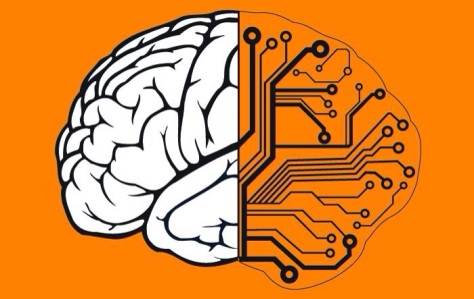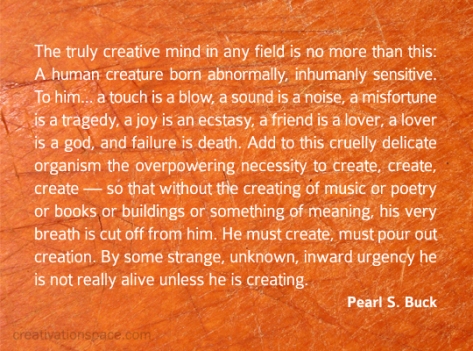
Similarities between AI and the Human Mind
The main distinguishing feature between the human mind and AI is consciousness (Frantz, 2003). While it is true that computers are far from being fully assimilated to the human brain, advances in the field of AI shed light on many features of the human mind that were previously unknown and that is a reliable indicator that there are innumerable similarities between the two.
The most obvious contrast is the brain and mind in humans compared to hard drive and software in computers. Brain is the entity responsible for storing information and executing the mechanical aspect of information processing while the hard drive carrying the same function in computers. The mind on the other hand is responsible for directing the brain on what, which and how to process the vast stored information in the brain while the software executes similar function in computers.
More interesting is the fact that information is received and processed by humans much the same way as is with AI. The learning process for example involves three steps: acquisition, storage and retrial of information (Frantz, 2003). Though humans can acquire information through natural senses such as sight and hearing and AI conventionally acquires information through input devices such as the key board on a computer or a scanner on the cash register, the gap between the two means of information acquisition is being bridged.
On the other hand, storage of information and its retrieval is carried with astonishing ease in AI compared to humans and in fact storage and retrieval in AI is far more efficient and often that makes it out perform humans in problem solving (Pinker, 1997).
There is a difference in processing speed which might indicate that operation mechanisms are different but the end result isn’t much different. The feelings of touch and smell are being now perfected in machines which denote the possibility of complete assimilation in the years to come. The variance in the abilities of each will be discussed elsewhere in this paper but the point we stress here is the fact the sequence of events in the process of learning is similar, at the very least on the sequence of events involved in learning.
Humanization of Robots
Many observers in the field agree that AI is hugely reliant on brute force calculations rather than strategy (Belsie, 1995). There are examples proving that computers are becoming increasingly strategizers rather than just information processing machines. As noted by Frantz “the ID3 algorithm not only diagnose soybean diseases with an accuracy which would make most any psychic jealous, but it does so with maximum efficiency. That is, it asks the right questions in the right order so as to make the diagnoses in the minimum amount of time” (Frantz, 2003). He contends that AI has discovered patterns in data and discovered tactics in chess that humans never though of.
While past decades have seen massive improvements in robotics, AI has a long way to reach the abilities of the human brain. Some of the areas of improvements are as follows: First, AI lack consciousness, that is to say computers require massive advances before they attain the ability to be aware of the world around them. Being fully conscious would mean that computers are able to make decisions that have not been pre-coded in them. They also lack more incalculable functions such as “musical and artistic aptitudes” that humans enjoy. They are still in their dark ages when it comes to responding to emotions such as smile and tears. Kurzweil calculates that in order for robots to reach these abilities they would require a calculating power of at least 20 billion calculations per second which conventional silicon chips are far from realizing (Kurzweil, 2000).
Such assumptions indicate that even the most mysterious of feelings such as love are just basic number crunching carried out in a more intense, faster and massive manner. Second, AI is far from realizing the ability necessary for survival that the human brain takes for granted; namely the ability to repair faulty parts when necessary (Setton, Dolly, Forbes, 2001).
Third, whereas AI are mainly depended on brute force calculations, humans make good amount of their decisions based on intuition which is defined as analytical thinking that is imbedded in habit so that when faced with similar situation recalculation is no longer necessary and action is taken spontaneously (Belsie, 1995).
The above are some of the interesting phenomenon that AI lack and which the human mind exploits regularly, but they are not by any means a complete list.
Artificialize-tion of the Human Mind
Having established the brain muscles that are lacking in the artificial brain lets now explore the opposite, strengths of robots that could make humans super beings. AI is considered to be an absolutely pure cognitive power.
In its ability to execute “what if” questions in a manner and speed which humans are far sloppier and slower, AI has indeed the edge in terms of speed and efficiency and has proved itself in chess competitions against world champions such as Kasparov (Pinker, 1997). It already carries most of the cognitive work that would have been impossible for humans to handle. In almost all the fields that humans need for their survival AI is employed.
In our field of psychology there is ample opportunity to benefit from AI’s ability to function rationally. For example, it could help us combat relapses of mental illnesses that have already been treated or just a good advice read from a self help book and accepted as rational but which we fail to follow once under enough pressure. Imagine a brain so fast that once a lesson has been learned on how to handle a particular interpersonal situation the response will always be carried out in a computerized manner! For instance, if our professor has learned that snapping at a student because she presented a sloppy paper is grossly unprofessional but repeats the behavior, our professor could benefit greatly from improvement in the “if this” then “that no matter what” processes; in which case he will always react according to acceptable professional customs. We would no longer have to deal with the pain of repeating same foolishnesses as we often do.
Perhaps the most important feature in which AI is superior to humans is its ability to share knowledge; what one computer knows can easily be transferred to millions of machines (Kurzweil, 2000). The point here is that our inability to have brute rational strengths that AI has, renders us victims of emotions and are bound to run into same situations and repeat same errors; sadly enough, in some cases those errors result in wars, famine and much suffering for humanity.
Humans created AI and ironically, as detailed above, the human brain might actually realize improvements by aid from its own creation; a creature that could transform humans into some sort of super human creature or even affords them some god-like qualities. While that may sound like a cheap joke, scientists from the computer field and neuroscientists are hard at work to transfer strengths of each side to the other. Kuwato Robotics of Japan have produced most advanced robots and contend that they are increasingly learning from them on how do certain human function take place.
By understanding how robots function they are optimistic that they will gain more “insights into how people think, make decisions and interact with the world” (Huang, 2005). Computers that are more humans and humans that are more computers is an actual science with clear sets of goals and ambitions.
Scientists believe that by reverse engineering the human brain it is feasible to achieve the humanization of robots. By humanizing robots, the possibility for transferring AI abilities into humans becomes a reality. At present this is of course a science that is more fiction than facts however, the mere fact that scientists have valid theories on how to create an electronic organ that is similar to the way the brain is made gives us hope that we will get there.
For example scientist know that “if a machine that matched the brain was built, mapping 10000 billion neurons, each with about 1000 connections, and assumed that a function of each connection could be represented by one bit, it would need ten square meters of silicon at today’s electronics density rates” (Kavanagh, 2005). Managing to realize such calculations does give a basis for exploring the human-machine interface and open up a door way much as reaching mars gives hope for reaching the sun. If we consider that scientists have made enough progress to allow the brain to control artificial limbs, it is a very encouraging factor that human-machine interface is a possibility (Huang, 2005).
If we reach that point we would be in a “positive” vicious cycle whereby humans are improved by AI and vice versa and perhaps humans have by now managed to bring AI to a point where it has become a tool for their own evolution into super humanity.
Conclusion and Summary
Much progress has been realized in the world of AI which in turn is proving essential in the understanding of the human mind processes and structure. Human mind is superior to AI in many ways such as consciousness and intuitiveness. On the other hand, AI possesses a more brutal form of rationality which renders it quite beneficial in those functions which require speed and accuracy.
The possibility of AI and Human brain gaining improvements by learning from one another or otherwise borrowing features from each other are promising and could lead humanity to a world far different from what we experience today. A world where machines feel more and humans feel less and think more.
It is interesting note of introspection that humans could one day afford robots the ability to love or ability to kill and enslave. Even more interesting is the prospect of reaching a point where humans can selectively choose which stimuli affect them emotionally. So that just as AI functions according to the software’s demands so humans might be able to suppress certain desires such as sex selectively and have only their spouses able to stimulate them sexually.
It is also quite interesting to consider that AI could one day help us become more saint-like.





